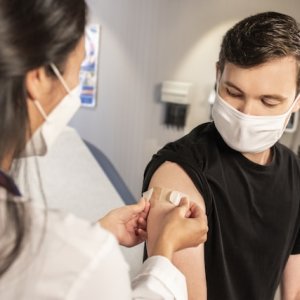
Healthcare Technology Transformation Accelerated
 By Miriam Bello | Senior Journalist and Industry Analyst -
Fri, 08/28/2020 - 12:50
By Miriam Bello | Senior Journalist and Industry Analyst -
Fri, 08/28/2020 - 12:50
Even before COVID-19 pandemic, companies were embracing the digital transformation. However, full digitalization seemed like a far reality only months ago. Today, companies have adopted technology into their practices to ensure business continuity following global lockdowns. How can technology and care provision merge? “Technologies that increase patient security are among the strongest trends as they provide clinical excellence and facilitate communication with providers and consumers,” said Roberto Aguilera, Health Sciences & Wellness Consulting Partner at EY, during an interview with MBN.
Telemedicine, which was neglected in the past, has quickly accelerated its market penetration. “Before the pandemic, 64 percent of doctors were not planning, in the near future, to introduce virtual consultations or digital check-ups nor to use voice-controlled digital assistants. Our survey indicated that around 60 to 80 percent of doctors were now very open or willing to incorporate new technologies into their practices,” said Aguilera. In addition to incorporating a telemedicine platform, Aguilera recommends hospitals to digitize their practices, too. “Hospital staff experiences an improvement in their productivity and in the long run, patients also experience the benefits because they are able to receive more personalized and adequate attention.”
How can hospitals make this a reality? “This involves the creation of a whole network of people: patients, medical professionals and providers. Creating a digital environment involves a great deal of management to allow the whole community to coexist and ensure the efficiency and safety of the hospital’s services,” explains Enrique Remezal, CEO of icon Group.
In Mexico, Médica Sur has one of the most outstanding digital transformation experiences. “We have partnered with technology groups that allow us to develop our own software and robots that help diminish risks for patients and doctors at Médica Sur,” said Misael Uribe, President of Médica Sur, during an interview with MBN. “We are consolidating a super safe hospital where you can go for treatment without fear of any kind. This is especially important now that we are facing a pandemic and safety inside the hospital is key to avoid further contagion.”
Improving performance throughout the whole healthcare chain with the help of technology is becoming increasingly important. “What we are seeing now is that many companies are interested in combining their service offering with digital tools that will add value to their offering,” said Andrés Gavenda, North Latin America Health Sciences and Wellness Industry Leader at EY. “They all have to hyper automate their process and start thinking about solutions that use artificial intelligence. With the use of robots, we can improve productivity in all industries, save time and focus on other matters that require specific attention.”
An example of how this works can be demonstrated by Dassault Systèmes’ collaboration with pharmaceutical companies. These players have sufficient data collected throughout the years and through a digital platform that connects applications they may share data across the spectrum of the different work cycles within life sciences. According to Gino Scarangella, Vice President of Life Sciences NAM at Dassault Systèmes this allows companies to take advantage of data flow across the entire business to increase productivity and reduce the time from ideation to actual production. “This eventually leads to a drop in R&D costs and a much faster delivery of therapies to patients,” he said in an interview with MBN.
But there is a greater example of how technology can impact company performance and patient care, which can be seen through Dassault Systèmes’ project called the Living Heart Project. This innovative creation connects different actors of the healthcare chain to create a simulation of an individual’s heart and then look for positive treatments. “Medical devices companies use this to make sure their products work as designed. For the medical professional, this solution may enable them to take the data collected from the patient and project it into the Living Heart system. This could allow surgeons to use a heart model driven by the data from their patient to practice before the actual surgery,” Scarangella explained.
















